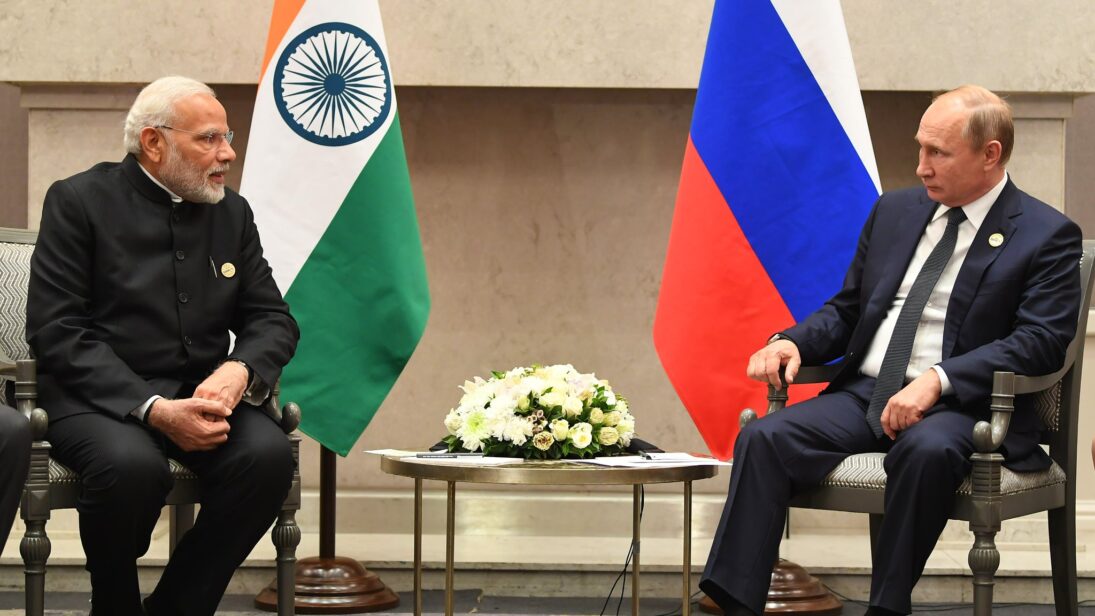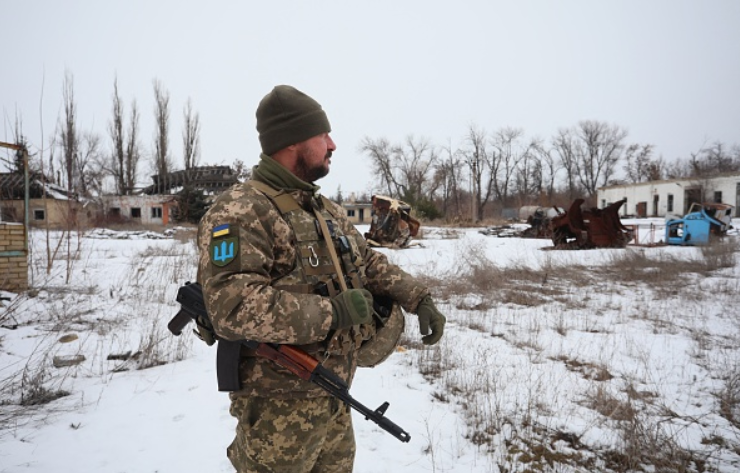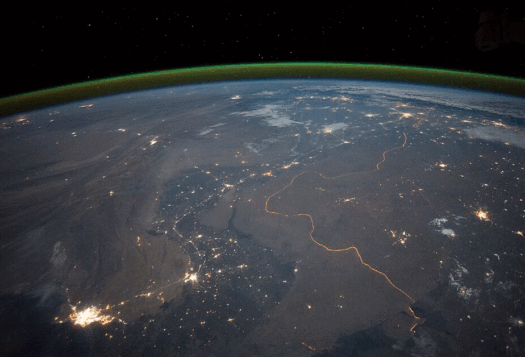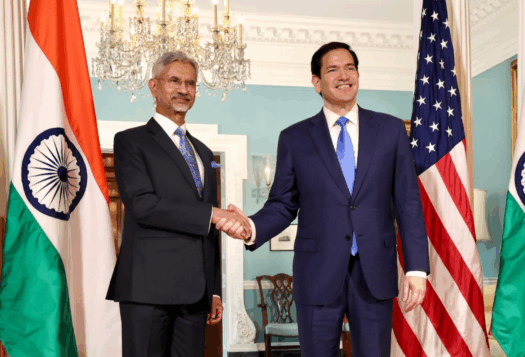
On December 4, U.S. intelligence revealed Russian plans to position 175,000 troops along Ukraine’s eastern border, adding new fuel to the eight-year long conflict that has brought destruction and poverty to what was once Ukraine’s most prosperous region. Over the following weeks, thousands of Russian soldiers, heavy weaponry, and military equipment amassed along the Ukrainian border. As Putin largely sidestepped engagement with the EU and NATO, the United States emerged as the primary crisis negotiator.
3,000 miles away in New Delhi, there were no signs of this emerging crisis. On December 6, 2021, President Vladimir Putin, in his second international trip since the beginning of the pandemic, arrived in New Delhi for a private meeting with Prime Minister Modi. That same day, India and Russia held their inaugural 2+2 dialogue, signing historic defense cooperation agreements and granting the bilateral relationship greater strategic significance.
Now, only two months later, Russian troops stand poised for invasion 140 miles from the Ukrainian capital of Kyiv, while American soldiers are being relocated to Romania, Poland, and Germany. In a final effort to resolve the conflict diplomatically, U.S. officials are pursuing de-escalation through bleak bilateral dialogues. Europe’s efforts have been divided and notably distinct from U.S. diplomacy, primarily driven by French President Macron’s separate bilateral dialogues with Russia.
As the United States finds itself increasingly alone in efforts to de-escalate the Ukraine crisis, India’s silence is deafening. India’s only public responses to the conflict have been a guarded comment by Ministry of External Affairs Spokesperson Arindam Bagchi calling for “long term peace and stability” and an abstention from a United Nations Security Council resolution on Ukraine. Although private talks may be occurring between India, the United States, and Russia, there is no evidence that India has taken steps to act as a third party mediator and help de-escalate tensions between the United States and Russia.
India’s refusal to engage in the Ukraine crisis reveals weakness in the U.S.-India partnership. The United States and India have rapidly increased security collaboration through top-down initiatives, advancing official policy faster than each country’s bureaucracy has learned to cooperate through socialization, intelligence sharing, and crisis planning. The result is an overly-militarized partnership that is prepared for warfare in the Indian Ocean but cannot coordinate crisis management elsewhere. If the U.S.-India partnership is to be tenable in the long-term, the United States and India must improve the quality of their institutional collaboration, clarify mutual expectations surrounding non-Indo-Pacific related issues, and supplement security cooperation with tangible investments to support India’s democracy and global leadership abilities.
The Origins of India’s Silence
India’s silence on the Ukraine crisis stems from attempts to balance relations with Russia and the United States—a “multi-alignment” strategy based on its historical non-alignment policy—and fear of drawing attention to its own territorial disputes with Pakistan and China.
The result [of top-down investments in the U.S.-India relationship] is an overly-militarized partnership that is prepared for warfare in the Indian Ocean but cannot coordinate crisis management elsewhere.
The contradictions of New Delhi’s partnerships are best exemplified by India’s purchase of Russian S-400 missiles, which will trigger U.S. CAATSA sanctions in 2022 unless U.S. lawmakers intervene. The CAATSA issue clouds U.S.-India relations and likely influences India’s silence on the issue in Ukraine; New Delhi is reluctant to take a stance that could anger Moscow given that the United States has yet to remove the biggest obstacle to the U.S.-India partnership.
India may also worry taking a public stance on the crisis in Ukraine would attract global attention to its territorial conflict with Pakistan in Kashmir, growing record of human rights violations, religious nationalism, and democratic backsliding. This is particularly reflected in widely contentious policies like the Citizens Amendment Act and the abrogation of Jammu and Kashmir’s semi-autonomous status.
India’s Strategic Calculus
Despite India’s hesitancy to take an active role in de-escalating the Ukraine crisis, a Russian invasion of Ukraine would be disastrous for India’s long-term foreign policy goals and damaging to the legitimacy of the U.S.-India partnership. If Russia invades Ukraine, subsequent international isolation would make Moscow more dependent on diplomatic and economic support from China. This situation is already unfolding, as Putin appears to be preparing for years of harsh U.S. sanctions and is increasingly operating in solidarity with President Xi . Given the ongoing Sino-Indian border conflict, Moscow and Beijing’s alignment could endanger New Delhi if China pressures Russia to reduce arms sales to India.

A full-fledged war between Russia and Ukraine would put India in an even more difficult position diplomatically, departing from New Delhi’s stated desires to normalize U.S.-Russia relations and develop deeper security relationships with European partners. The United States is unlikely to publicly criticize India accepting Russian aggression for fear of causing a rift with India. But India’s policy of ambivalence towards Ukraine would likely decrease the chances of Congress passing a CAATSA waiver and signal fault lines within the U.S.-India partnership for China and Russia to further exploit.
India’s strategy is surprising given the consequences of a protracted conflict in Ukraine. Though India is unlikely to take a stance directly contrary to Russia, India could act as a third-party mediator given its unique position as a partner of both the United States and Russia. India’s inaction demonstrates that policymakers in New Delhi either believe they have no capacity to de-escalate or, that they are willing to risk India’s long-term security for self-destructive, short-term interests. Washington’s lack of resolve in demanding more of India enables its lack of action.
Weakness in the U.S. India Partnership
Regardless of motive, India’s inaction is a strategic miscalculation, revealing weaknesses in India’s diplomatic and crisis-management abilities—projected by both parties as central to the U.S.-India partnership. If Indian leaders believe they have no role to play in the Ukraine conflict, they are unlikely to succeed in jointly addressing challenges in the Indo-Pacific that require not just military-to-military coordination between the United States and India, but softer diplomatic balancing.
Future coordination regarding specific scenarios in the Indo-Pacific must place a greater emphasis on diplomacy and compel India to manage geopolitical crises during its ascension as a major power in the Indo-Pacific. Greater emphasis must also be placed on socializing the bureaucracies of the United States and India to prepare policymakers for jointly managing emerging crises beyond security and military cooperation. While there may be private bilateral conversations between the United States and India on the Ukraine crisis, it is telling that the State Department does not appear to be seeking support from India as much as it has from Germany, France, and even Israel.
If New Delhi is unwilling to risk Moscow’s disapproval or draw attention to domestic territorial disputes, it is neglecting its own agency and failing to act as the major power it aspires to become.
If New Delhi is unwilling to risk Moscow’s disapproval or draw attention to domestic territorial disputes, it is neglecting its own agency and failing to act as the major power it aspires to become. As much as India is dependent on Russian imports, Russia is equally reliant on exporting to India’s market. The India-Russia defense relationship, which accounts for 60-70 percent of India’s military technology, is likely to become even more critical if Russia’s economy faces U.S. sanctions. India should articulate its own perspective on the Ukraine crisis with the expectation that taking a de-escalatory stance will not be catastrophic to relations with Moscow. Additionally, the United States has already signaled tacit ambivalence to India’s human rights record, thus drawing attention to India’s internal issues is unlikely to have major consequences for New Delhi.
Policy Implications and Conclusion
In the coming weeks, India should open an additional channel of dialogues with President Putin, following in French President Macron’s stead. In this moment of crisis Prime Minister Modi’s close relationship with Putin could be an asset to the United States and India’s shared goal of preventing an invasion. India could adopt a similar mediator role to what U.S. Secretary of State Antony Blinken has urged Israel to play. As India continues to espouse a modern form of non-alignment built on relations with multiple powers, it must not confuse strategic ambiguity with inaction. India must take an active role in managing crises for the sake of global stability, recognizing the increasing likelihood of conflict and the immense civilian toll an invasion would take.
The coming period of great power competition is not going to be as black-and-white as U.S. policymakers outwardly portray it. Major powers in the Indo-Pacific such as India, Pakistan, and Indonesia are likely to maintain a degree of ambiguity when managing relationships between the United States, China, and Russia. In turn, conflict may not erupt in a traditional, U.S. versus China dyad, with each country supported by a constellation of allies and partners. Instead, conflict may more closely resemble Russia’s actions against Ukraine, where gray-zone tactics delay an outright conflict while slowly constraining the ability of U.S. allies and partners to demonstrate diplomatic cohesion. If the United States is to depend on India, especially in the event of a Chinese invasion of Taiwan or South China Sea conflict, India must not retreat from the global stage. Policymakers in New Delhi and Washington must reorient the partnership to face global crises together, in Ukraine and beyond.
***
Image 1: MEAphotogallery via Flickr


